
All categories
Featured selections
Trade Assurance
Buyer Central
Help Center
Get the app
Become a supplier

(1013 products available)




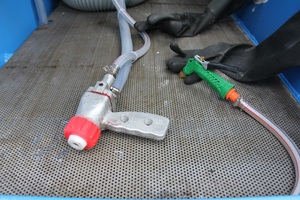


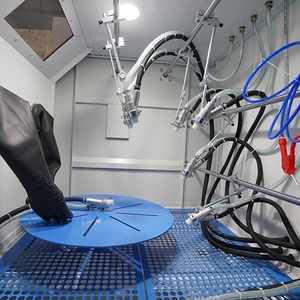


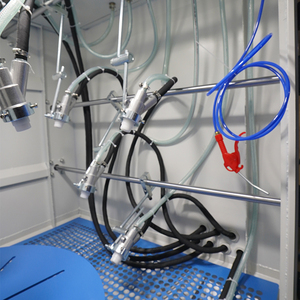






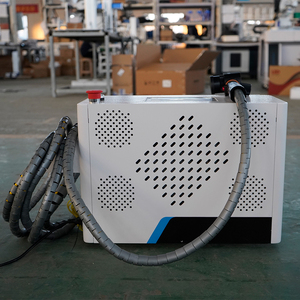
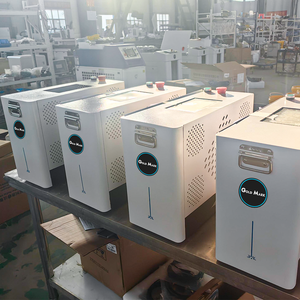

A sandblaster, also known as abrasive blasting, is a device that uses high-pressure air to spray a fine-abrasive material onto a surface to make it smooth or shine. There are various kinds of sandblasting machines for sale. They all work on the same fundamental principle but differ in internal parts and how they apply the abrasive material to surfaces.
The performance of a sandblaster system is decided by its specific parts. They all need to be maintained for consistent efficiency.
Compressor
The hoses and fittings of the air compressor should be examined for any leaks or signs of wear. The compressor oil should be checked and changed if it isather than two-thirds full and looked cloudy. Air filters need to be cleaned or replaced monthly and hoses need to be inspected for kinks or damage.
Gun
Gun maintenance involves cleaning, lubricating, and inspecting it regularly. After each use, tap the gun on a metal container to shake out any residual media then blow it out with compressed air. Every few weeks, disassemble the nozzle, tip, and trigger components and clean them with solvent. Apply a light coat of lubricant to moving parts. Check for worn nozzles and tips and replace them if they show significant wear. Inspect the trigger and cable for fraying or damage and replace them if needed. Following this schedule will keep the sandblasting gun functioning properly and extend its life.
Nozzle
Sandblasting nozzles should be cleaned regularly to maintain optimal performance. After each use, remove the nozzle from the gun and clean out any media buildup with a wire brush or nozzle cleaning tool. Inspect the nozzle for wear or damage, paying particular attention to the tip, which wears the fastest. If the nozzle shows substantial wear or cracks, replace it. Store nozzles in a dry, protected location away from direct sunlight or heat sources. Following these simple maintenance steps will help extend the life of sandblasting nozzles and keep them functioning effectively.
Blast cabinet or pot
It is important to clean the interior and exterior surfaces of a blast cabinet or pot regularly to remove any buildup of blasting media and debris. Use a shop vacuum to remove spent media from the cabinet base and floor while taking care not to damage the recovery system. Wipe down all surfaces inside with a solvent-soaked rag to remove contaminants. The outside of the cabinet should be vacuumed and then washed with soapy water to remove dust. Follow up by applying a corrosion inhibitor to exposed metal surfaces. Cleaning frequency should be based on usage but ideally, the cabinet should be thoroughly cleaned at least once per week. A consistent cleaning schedule will prevent cross-contamination of media, maintain optimal reclaim function, and extend equipment life.
When choosing the appropriate sandblasting system for sale, focusing on the most critical features is essential.
Machine Size and Weight
Consider what parts are being blasted and the area available for blasting them. Heavier machines are more durable, but their weight can add to the cost of shipping and transportation. If the blasting machine needs to move frequently, it must have a reasonable weight and be portable.
Production Rate
Dealers should research the production rate to know how many parts the machine can handle daily. Investing in a machine that works efficiently can lower the cost-per-part to sandblast. If the production rate is uncertain, it may help to study similar parts and how much time the machine spends on each of them.
Type of Abrasive Material
The sandblaster's choice of abrasive material is critical to its part processing. Some are set up to use aluminum oxide or glass beads. Others can handle more aggressive materials like silicon carbide and garnet. Understanding how each abrasive works is important for picking the right one.
Workforce Requirement
Automation may be needed more than manual operation in this case. Even though a machine may cost more up front, it can save a lot of money in the long run by processing more parts per hour than a unit that needs manual help. Knowing what kind of machine is needed and how many operators are around to assist should be examined closely to make a choice.
Affected Area Size
When looking over parts to be sandblasted, knowing the size of the impacted area is essential. Bigger areas will require more machines or a more powerful unit because of the volume of parts that need processing in a set time.
Screen Size
The screen size must cover many parts efficiently. A more significant screen may be needed to handle larger quantities of material being processed per hour.
Dust Collection System
How much dust the parts generate is crucial to deciding on a dust collection system. If it produces a lot of dust, a more potent collector will be needed to capture it and filter the air so people can work safely.
Q: How can business buyers increase the efficiency of their sandblaster machine?
A: Efficiency is a crucial issue for machine business buyers. Breathing air hoses are now more than required, but buyers can use up to four of them, which will increase sandblaster system efficiency and reduce blasting downtime if operators use efficient respirators. Also, they should consider using high-noise-reduction earmuffs instead of earplugs that will give better protection and enable operators to hear each other from further away.
Q: Are there new developments in sandblaster machines?
A: There are always new evolutions moving the machine industry into the future, such as automated sandblasting, which is now a popular trend. The machine is beneficial and enhances accuracy, efficiency, and consistency. It eliminates the need for manual work and thus reduces the time taken. Moreover, the machine has a roller conveyor system, which makes it easy for the object to pass through the machine. Without the help of a person, it moves effortlessly and steadily through the sandblaster system, ensuring consistent results every time. The integration of computer numerical control (CNC) technology in modern sandblasting machines has enabled more precise and controlled blasting processes.
Q: How long does a sandblaster machine take?
A: It usually takes about two to three weeks for the sandblaster machine to arrive, depending on the supplier and shipping method used. B2B buyers, the air pressure setting is critical to the speed of blasting, the type of surface being blasted, and the sandblaster machine used.
Q: What kind of surfaces can a sandblaster machine be used?
A: Steel surfaces are expected to be the most common but not the only one. Aluminium, GRP (glass-reinforced plastic), marble, magnesium, fired clay, rubber, brass, copper, carbon fibre, bronze, ceramics, laminates, metals, composite materials, and any surface requiring the removal of loose material or a high-level close normal finish are all suitable masking materials.